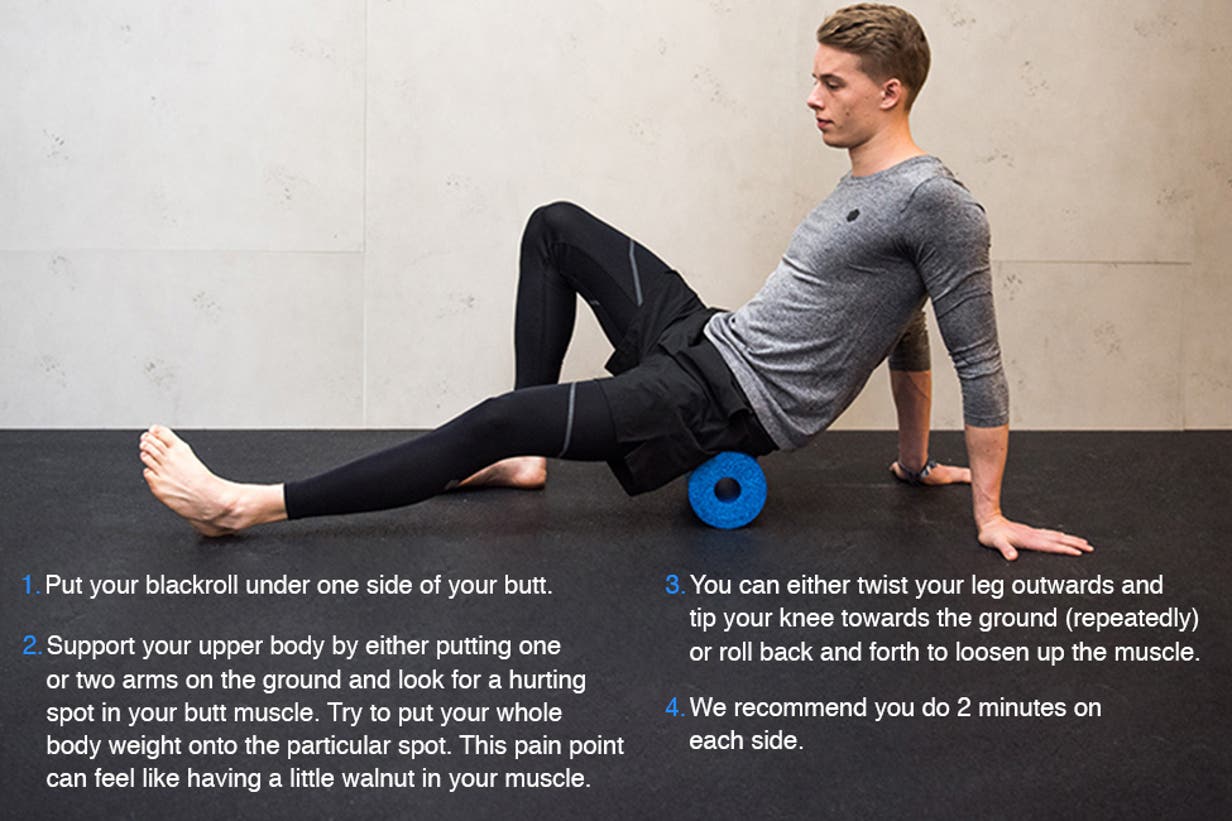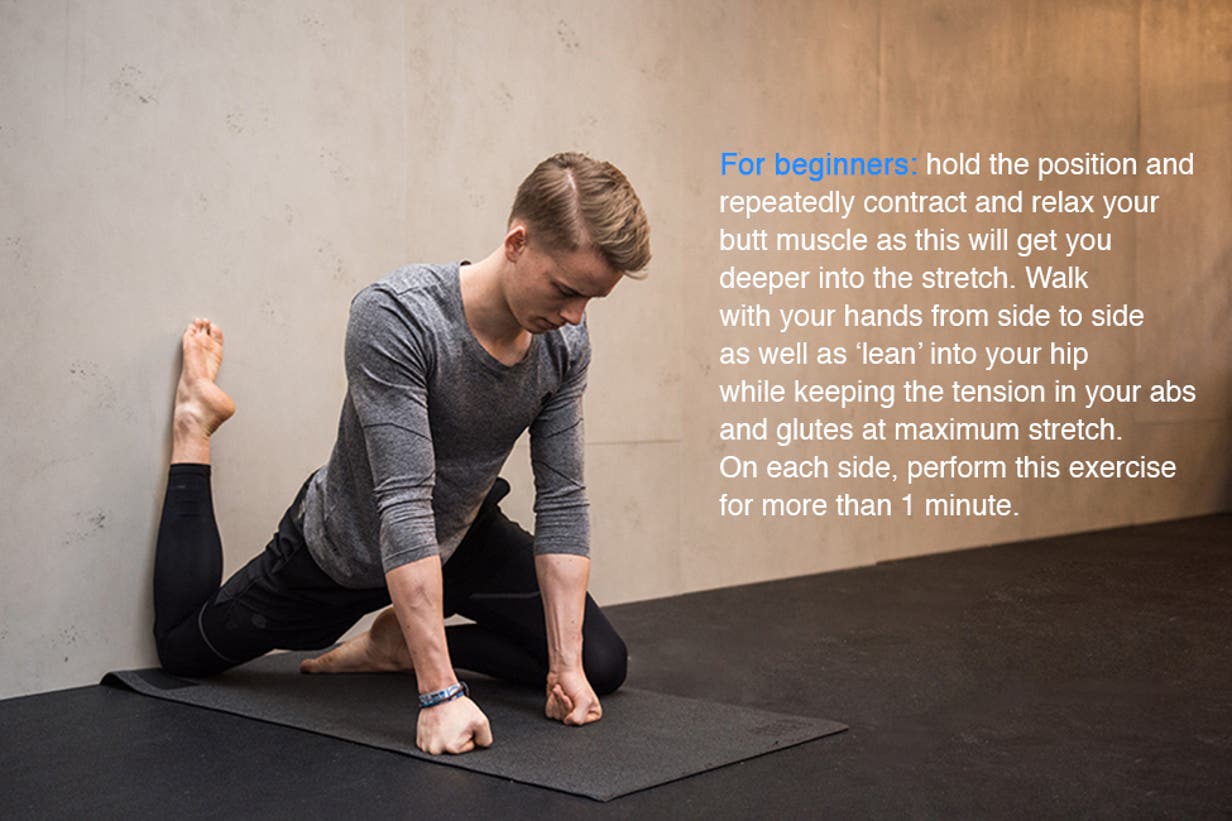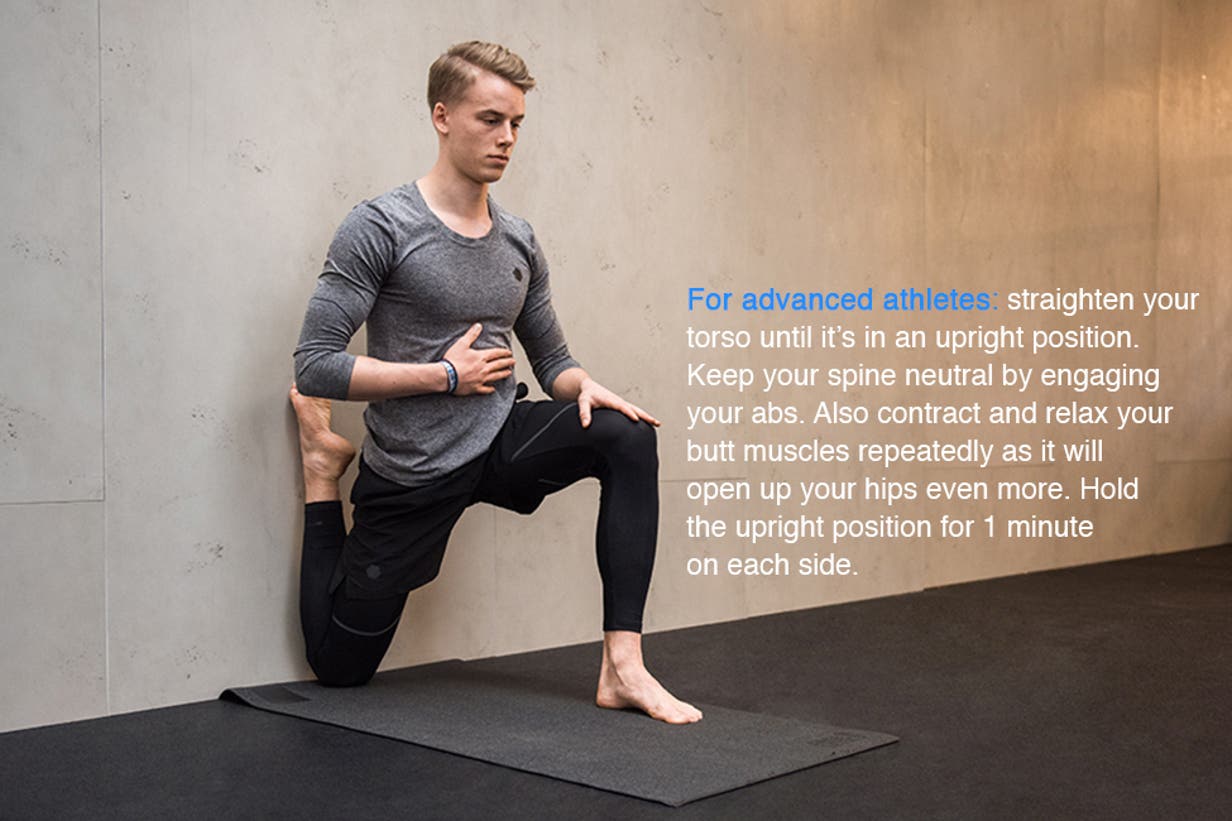Ever tried to perform a well executed squat after sitting for hours? Not easy right? That’s because whenever you perform such exercises it’s important to have full range of motion, especially in your hip area. Sitting all day with hardly any movement however can lead to stiff muscles and joints. Since mobility is an important factor in performance, we want to show you three great mobility exercises for your hips and butt to release your muscles and joints so you are fully prepared for your next workout.
First things first: What is mobility?
People often get confused with the term mobility. Mobility is not to be mistaken for stretching as stretching aims at making your muscles ‘longer’ or in other words,, making your muscles more elastic. So what do we mean by mobility? Mobility takes into account everything important to be able to perform movements properly: softening hardened muscles, treating joint restrictions, as well as loosening the joints. Whenever it comes to movements like squats, burpees or running, it’s important to have good mobility.
Hip mobility exercises that take your performance to the next level
1. Loosening up your butt muscles with a blackroll
Trust us, you’ll be amazed of how this mobility exercise will affect your performance when doing squats, burpees or sprints. After mobilising one side, you can check the effect by squeezing your butt muscles in a standing position. Your mobilised side will feel way stronger than your other side as mobilised muscles will contract better. You’ll be able to put more weight on your squats and be more efficient when doing burpees or sprints. Here’s how it works:

2. The “Couch-Stretch”
The so-called Couch-Stretch is probably the best mobility exercise to open up the front side of your hips as well as to mobilise your thigh muscles. You’ll be able to perform your squat in a better and more upright position or push with your legs even further when doing a sprint as you can extend your hips more. Don’t worry if you really struggle with this movement at first. If you’ve never felt a stretch like this before, it can feel like a mini workout in itself. What’s important: During this exercise, it’s crucial that you squeeze the butt muscle of your posterior leg as you go into position as well as engage your abs to keep a neutral spine.


3. Hip Flow
This sequence – let’s call it a flow – of mobility exercises will improve your range of motion in your hips as you’ll be able to open them up easier. Be it when performing a squat, lunges or a sprint, movement will feel smoother and more efficient. Here’s how you should do it:
- Starting from a standing position, step one leg out in front of you, placing your entire foot on the ground. Lower your other leg until your knee and foot are both touching the floor. Your back and your hips remain neutral. Placing your hands on the floor in front of you, use them to support your upper body. Drive your hip towards the ground to increase the stretch.
- The knee of your standing leg should be facing outwards while your foot remains on the ground.
- Now face away from your standing leg. This will increase the rotation of your hip. If you’re mobile enough, try to push your knee away gently.
- For advanced athletes: For a different stimulus, you can turn your upper body towards your knee, hug your standing leg and place your other arm (including your elbow) on the ground.
For maximum effect, we recommend you do it before training after you’ve warmed up with the dynamic warmup in the Freeletics App, as your muscles and joints will already be well supplied with blood. You can also use the mobility exercises on your rest days to help your body recover even better.
Be aware that mobility exercises might hurt a little. As a Free Athlete, you are used to pushing yourself. Just be careful you don’t push too hard and cause injury. See how far you can go into the stretch with the different mobility exercises. And remember, the pain you feel today will be the progress you feel tomorrow.